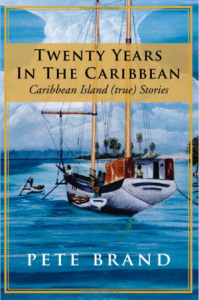 Fred Ward was coming to do another story on Dominica for the National Geographic. We always looked forward to his visits. He and Charlotte are from Miami but had moved to the Washington DC. area. Fred is the only person I have known who owned his very own helicopter; for a while.
Fred Ward was coming to do another story on Dominica for the National Geographic. We always looked forward to his visits. He and Charlotte are from Miami but had moved to the Washington DC. area. Fred is the only person I have known who owned his very own helicopter; for a while.
“I’ve got the most interesting thing for you two,” he announced over the phone, “It has to do with coconuts and you are going to love it.”
One of the things about the island’s economy that had impressed Fred was the coconuts and coconut oil that were produced in quantity.
Coconuts came from the East but were brought to all of these islands for the food, oil, fibers, and building logs they produce. In the Pacific they are also the source of a potent alcoholic drink but that technique has not been practiced in the West Indies.
Copra is the name for the dried meat of mature coconuts before the oil is pressed out. After the coconut oil is extracted the dried pulp is used as cattle feed.
Coconuts fall from the trees when they are brown and therefore ripe. Coconut water is the juice of a green coconut that is sung about in the famous old Blind Blake, Bahamian calypso, ‘Rum and Coconut Water’. Jelly is the term for the immature coconut meat in a green coconut and is fancied by most islanders; it is not mildly cathartic, as is the ripe coconut.
An islander may agree to do a minor task for “a few jellies”; full sized but green coconuts.
Coconut oil is a staple in West Indian kitchens, which incidentally are often, as in our old south, in buildings outside of the main house.
The production of coconut oil begins with the coconuts falling off the trees. Dominicans contract to gather them by what is locally called ‘tasks’, which is a variation on the payment by piece. They walk through the fields, swinging a cutlass and impaling them so they don’t have to lean over to gather them. Impaled they can be shaken off where the piles are accumulating. The contract laborers shuck off the outside husks for a penny or two per nut. It is a fast strong-arm process in which the worker takes the nut in both hands and brings it down, stem end first, onto a stout iron spike set upright in concrete for the purpose. With two or three deft thrusting-twists a strong man can pull the husk off the nut.
Once husked the coconuts are broken as nearly in half as possible and these pieces are placed in the sun for a few days until the meat shrinks and pulls away from the shell. These pieces of extracted, drying coconut and the shells they came out of, are then taken to a copra drying shed.
The drying shed is a masonry or tin building, usually about ten meters square with dirt floor and a corrugated iron roof. Halfway up from the dirt floor to the ceiling is a web of expanded iron screen, supported on metal joists. The coconut meat is placed on this. On the ground beneath the meat is formed a long meandering line of coconut half shells, each nestled inside the next. The long line weaves back and forth across the ground under the meat. Lit at one end, the line of nut shells burns slowly like a giant mosquito coil for many days. The low heat and smoke dry the copra and it is then ready to go to the rendering plant where the oil is extracted through presses with high pressure filters that take out the ever-present rancid smell of the oil.
Fred’s gift? A manual-mechanical coconut husker. It was a great conversation piece at the hotel from that time. Coals to Newcastle.

Pingback: Twenty Years In The Caribbean: Caribbean Island (true) Stories | Inkprov